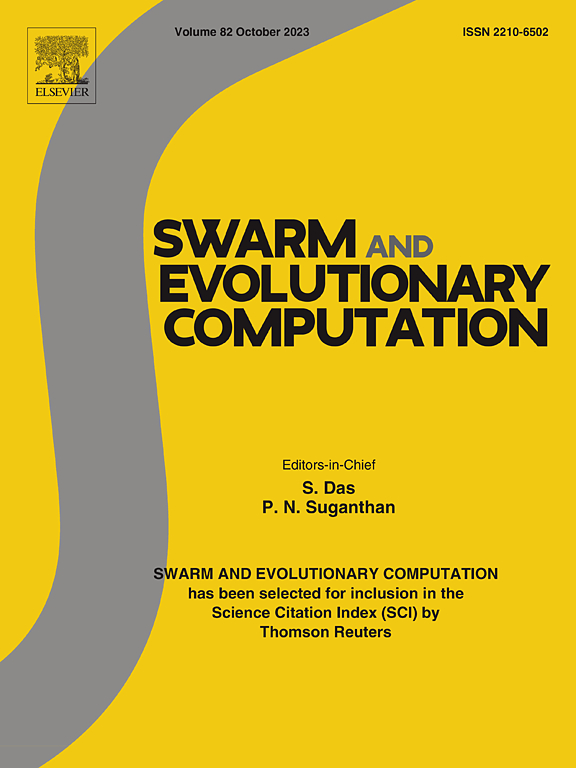随机局部搜索算法预测行为的困难
IF 8.5
1区 计算机科学
Q1 COMPUTER SCIENCE, ARTIFICIAL INTELLIGENCE
引用次数: 0
摘要
识别随机局部搜索(SLS)算法的关键特性,如收敛到最优解,是至关重要的。不幸的是,由于它们的图灵完备性和莱斯定理,它们的非平凡语义性质通常是不可确定的。因此,大多数收敛结果是通过滥用最终将其描述为简单(概率)穷举搜索算法的属性来实现的。我们证明了证明SLS算法性质的一般困难具有强大的理论基础:即使当SLS算法是确定性的并且它们的内存是线性有界的,从它们的输入配置中找到它们的输出是PSPACE-hard -因此,如果P≠PSPACE,则难以处理。这可以通过将PSPACE-hard DLBA- accept问题(即给定一个确定性线性有界自动机和一个单词,检查自动机是否接受该单词)转换为磁片匹配问题MPCP的实例来证明,这样它的解表示DLBA在执行过程中所遍历的配置。简单的SLS算法可以为这些MPCP实例获得越来越多的部分解,并提供原始DLBA-ACCEPT实例的答案。研究还表明,找出使用线性存储器的SLS算法是否满足任何重要的语义属性是PSPACE-hard的。为此,引入了对Rice定理的一个改进,用于处理在线性空间中运行的计算工件。为了提供对SLS算法的pspace硬度的直观测试,给出了如何将我们的标准应用于几种启发式方法(如深度优先搜索和遗传算法)的示例。本文章由计算机程序翻译,如有差异,请以英文原文为准。
The difficulty of predicting behavior on stochastic local search algorithms
Identifying key properties of Stochastic Local Search (SLS) algorithms, such as convergence to optimal solutions, is essential. Unfortunately, due to their Turing-completeness and Rice’s theorem, their non-trivial semantic properties are generally undecidable. Therefore, most convergence results are achieved by abusing properties that ultimately depict them as simple (probabilistic) exhaustive search algorithms. We show that the general difficulty to prove properties of SLS algorithms has a strong theoretical basis: even when SLS algorithms are deterministic and their memory is linearly bounded, finding out their output from their input configuration is PSPACE-hard — and thus intractable if PPSPACE. This is proven by translating the PSPACE-hard DLBA-ACCEPT problem (i.e. given a Deterministic Linear Bounded Automaton and a word, checking whether the automaton accepts the word) into an instance of the tile-matching problem MPCP such that its solution denotes the configurations traversed by the DLBA during its execution. Simple SLS algorithms can obtain increasing partial solutions for these MPCP instances and provide the answer of the original DLBA-ACCEPT instances. It is also shown that finding out whether an SLS algorithm using linear memory fulfills any non-trivial semantic property is PSPACE-hard. An adaptation of Rice’s theorem dealing with computation artifacts running with linear space is introduced for that purpose. In order to provide an intuitive test of PSPACE-hardness for SLS algorithms, examples of how our criteria is applied to several heuristics, such as depth-first search and genetic algorithms, are shown.
求助全文
通过发布文献求助,成功后即可免费获取论文全文。
去求助
来源期刊

Swarm and Evolutionary Computation
COMPUTER SCIENCE, ARTIFICIAL INTELLIGENCEC-COMPUTER SCIENCE, THEORY & METHODS
CiteScore
16.00
自引率
12.00%
发文量
169
期刊介绍:
Swarm and Evolutionary Computation is a pioneering peer-reviewed journal focused on the latest research and advancements in nature-inspired intelligent computation using swarm and evolutionary algorithms. It covers theoretical, experimental, and practical aspects of these paradigms and their hybrids, promoting interdisciplinary research. The journal prioritizes the publication of high-quality, original articles that push the boundaries of evolutionary computation and swarm intelligence. Additionally, it welcomes survey papers on current topics and novel applications. Topics of interest include but are not limited to: Genetic Algorithms, and Genetic Programming, Evolution Strategies, and Evolutionary Programming, Differential Evolution, Artificial Immune Systems, Particle Swarms, Ant Colony, Bacterial Foraging, Artificial Bees, Fireflies Algorithm, Harmony Search, Artificial Life, Digital Organisms, Estimation of Distribution Algorithms, Stochastic Diffusion Search, Quantum Computing, Nano Computing, Membrane Computing, Human-centric Computing, Hybridization of Algorithms, Memetic Computing, Autonomic Computing, Self-organizing systems, Combinatorial, Discrete, Binary, Constrained, Multi-objective, Multi-modal, Dynamic, and Large-scale Optimization.
 求助内容:
求助内容: 应助结果提醒方式:
应助结果提醒方式:


